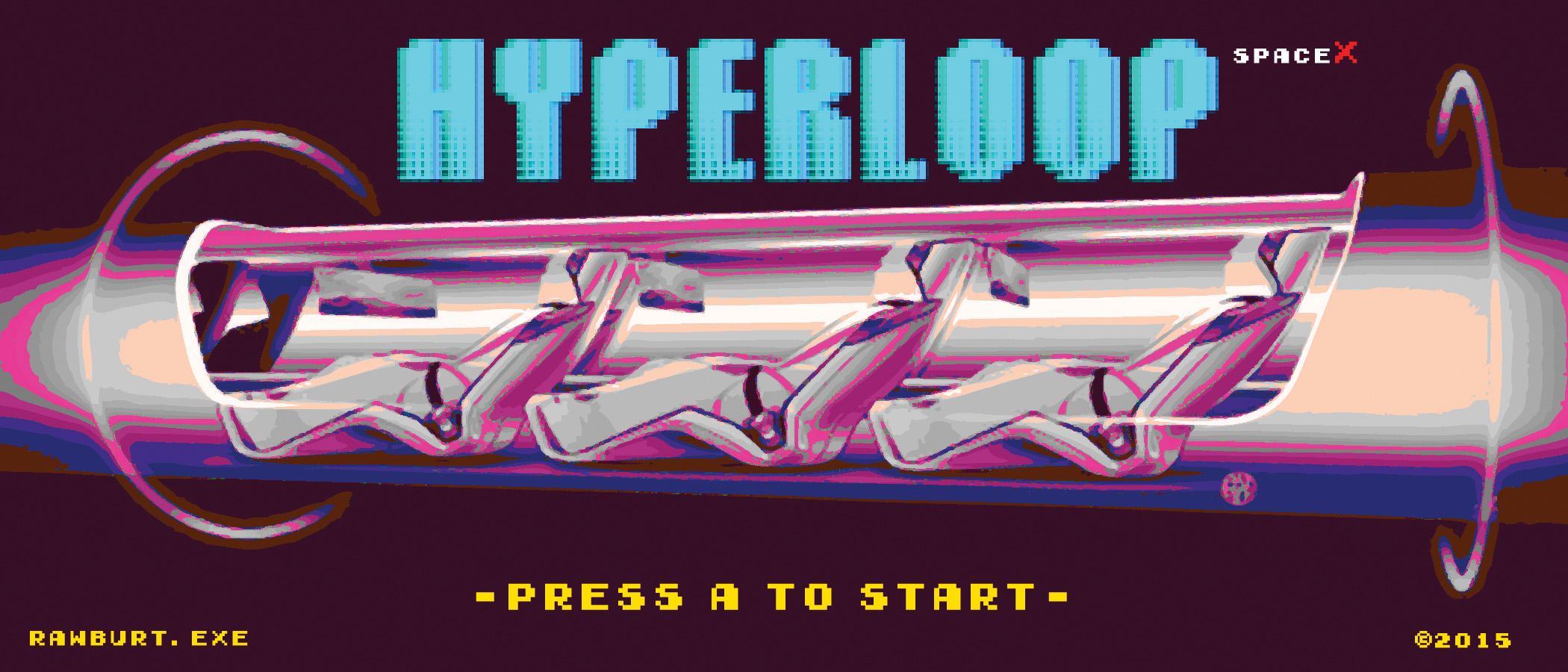
Miguel Rodriguez
Illustration by Robert Perez, Staff Illustrator
Numerous groups of students from the University of California, Santa Barbara and abroad are participating in a competition to construct a prototype Hyperloop pod as part of a project headed by SpaceX.
That’s a whole bunch of words that might need a little bit of explaining.
So first, Elon Musk (who is basically the world’s real life Tony Stark) started a company called SpaceX, which builds and sends rockets into space. (Cool.) Second, he designed a super high-speed vehicle that’s neither plane, train, car or boat, called Hyperloop, which would be safer, faster, cheaper, convenient, self-sustainable, non-disruptive to preexisting routes and resistant to natural disasters. What’s the connection? Well, SpaceX wanted to bring attention to this concept of Hyperloop, and began hosting a competition in which teams — primarily college students and independent parties — will design and potentially test a prototype Hyperloop pod.
In order to understand what the contest entails, you’ll need to know what Hyperloop is. “Hyperloop itself is an idea proposed to re-envision transit between San Francisco and Los Angeles…and its most defining feature is its low-pressure tube environment, which leverages the altered aerodynamics to mitigate drag and friction,” according to fourth year computer engineering major and Head of the Computer Engineering Division of the UCSB team Celeste Bean.
Bean explained how one of the most interesting aspects of the Hyperloop concept is its self-sustainability: the entire structure would be largely powered by solar panels. Furthermore, the Hyperloop track would follow pre-existing routes, meaning less displacement of land and people. In essence, there’s a pod in a vacuum tube that goes really fast and powers itself.
The Hyperloop contest is open to basically anyone that has the means and motivation. “There are over 350 teams currently participating with roughly half of those being university teams representing six different countries,” said fourth year mechanical engineering major and Head of the Mechanical Engineering Division Trevor Fritz.
Fourth year mechanical engineering and material science double major Richard Behiel even helped organize a team over Reddit called rLoop. Right now, all of the participating teams are in the sixth week of the contest, out of a possible 30 weeks. Within a week, final design submissions will be due to SpaceX and the best designs will be selected to continue their work.
So where does UCSB fit in with all this? Right now, there’s an undergraduate team of five electrical engineers, five computer engineers and 10 mechanical engineers, adding up to a total of 20 engineering students working together to create the future. In addition, each division has one graduate and one faculty supervisor/advisor to help with the process. The fourth year undergraduates are the ones hard at work creating the prototype pod, and the Hyperloop contest is their capstone project for the year.
According to Professor Tyler Susko, the faculty advisor for the mechanical engineering division, the Hyperloop contest was brought to him by one of his mechanical engineering students. “After I was introduced to the contest, I thought it was really interesting and a lot of engineering students wanted in,” Susko said. He set out to find funding and found financial support from Ingersoll Rand, a leading company in compressed air technology, as well as a very generous donation from Jonathan Siegel, who would match the offer of the highest donation.
Sadly, because requirements kept changing, funding only allowed for one team of 20. To put into perspective, 26 mechanical engineers wanted in, and 16 were cut. “Because we had so many students that wanted to participate, we had to think of a way to maximize our chances of succeeding,” Susko said. “The students formed their own teams of varying sizes and wrote an essay about why their team stood the best chance, and then the most promising one was chosen from that.”
So far, all of the participants are enjoying the challenge ahead of them.
“I undertook the challenge because it will be my only chance to build a robotic hovercraft that races through a partial vacuum,” fourth year computer engineering major Connor Buckland said. “We are working on a means of transport that has never been attempted before, which is a once-in-a-lifetime opportunity.”
Meanwhile, Fritz took the challenge “simply because it’s really cool!” Being 20 percent of the way into the competition, the UCSB Hyperloop team has a lot of hurdles to overcome, but from the looks of things, they’re well on their way to making history. For science, we wish them the best of luck!
The Bottom Line will continue to follow UCSB’s Hyperloop Pod Competition team as the contest progresses.










